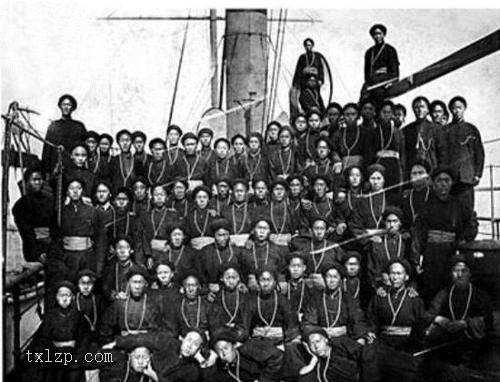Period:Warring States period Production date:5thC BC – 2ndC BC
Materials:jade
Technique:polished, incised,
Subjects:dragon
Dimensions:Length: 9 centimetres
Description:
Dragon silhouette of opaque brownish white jade with calcification and soft polish. The stylized, elongated curvilinear dragon with its head turning back towards its tail is decorated with raised spiral curls and highlighted by striated volutes extending from the body. A vertical perforation runs through the body.
IMG
![图片[1]-figure BM-2022-3034.147-China Archive](https://chinaarchive.net/Warring States period/Jades/475_.jpg)
Comments:A tightly curved s-shaped body encloses a dragon head within one bend and a bifurcated tail within the other, making a rhythmical pattern. Two narrow fins, filled with striations, one at each end, balance the body of the creature. The pendant is outlined by a narrow ridge and is covered with fine relief spirals enhanced by incised lines. The dragon is decorated with raised spiral curls. A vertical hole runs through the lower curled section of the body. Large and small dragon pendants were used concurrently, as seen in the appearance in the Zhongshan tombs at Hebei Pingshan of both large dragons comparable with 592 [2014,AsiaLoan,1.183] and smaller dragons of less complex and more compressed form. As was so common in ancient and indeed later China, there was probably some system of grading that placed the smaller dragons below, or in subordination to, the larger dragons. See Rawson 1995, p.270, cat.no.17.10. Eastern Zhou.
Materials:jade
Technique:polished, incised,
Subjects:dragon
Dimensions:Length: 9 centimetres
Description:
Dragon silhouette of opaque brownish white jade with calcification and soft polish. The stylized, elongated curvilinear dragon with its head turning back towards its tail is decorated with raised spiral curls and highlighted by striated volutes extending from the body. A vertical perforation runs through the body.
IMG
![图片[1]-figure BM-2022-3034.147-China Archive](https://chinaarchive.net/Warring States period/Jades/475_.jpg)
Comments:A tightly curved s-shaped body encloses a dragon head within one bend and a bifurcated tail within the other, making a rhythmical pattern. Two narrow fins, filled with striations, one at each end, balance the body of the creature. The pendant is outlined by a narrow ridge and is covered with fine relief spirals enhanced by incised lines. The dragon is decorated with raised spiral curls. A vertical hole runs through the lower curled section of the body. Large and small dragon pendants were used concurrently, as seen in the appearance in the Zhongshan tombs at Hebei Pingshan of both large dragons comparable with 592 [2014,AsiaLoan,1.183] and smaller dragons of less complex and more compressed form. As was so common in ancient and indeed later China, there was probably some system of grading that placed the smaller dragons below, or in subordination to, the larger dragons. See Rawson 1995, p.270, cat.no.17.10. Eastern Zhou.
© Copyright
The copyright of the article belongs to the author, please keep the original link for reprinting.
THE END



![[Qing Dynasty] British female painter—Elizabeth Keith, using woodblock prints to record China from the late Qing Dynasty to the early Republic of China—1915-China Archive](https://chinaarchive.net/wp-content/uploads/2022/11/image-191x300.png)

